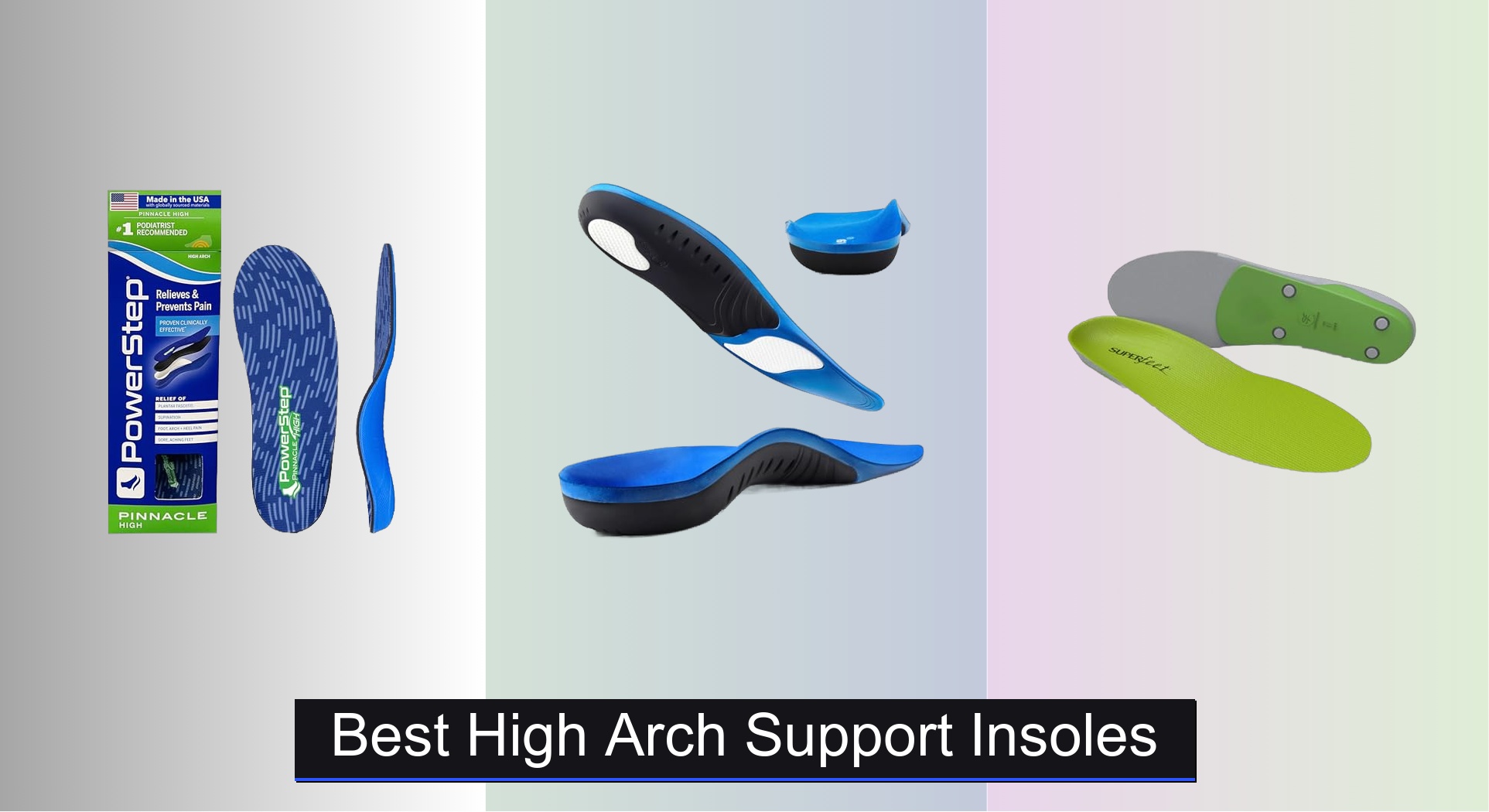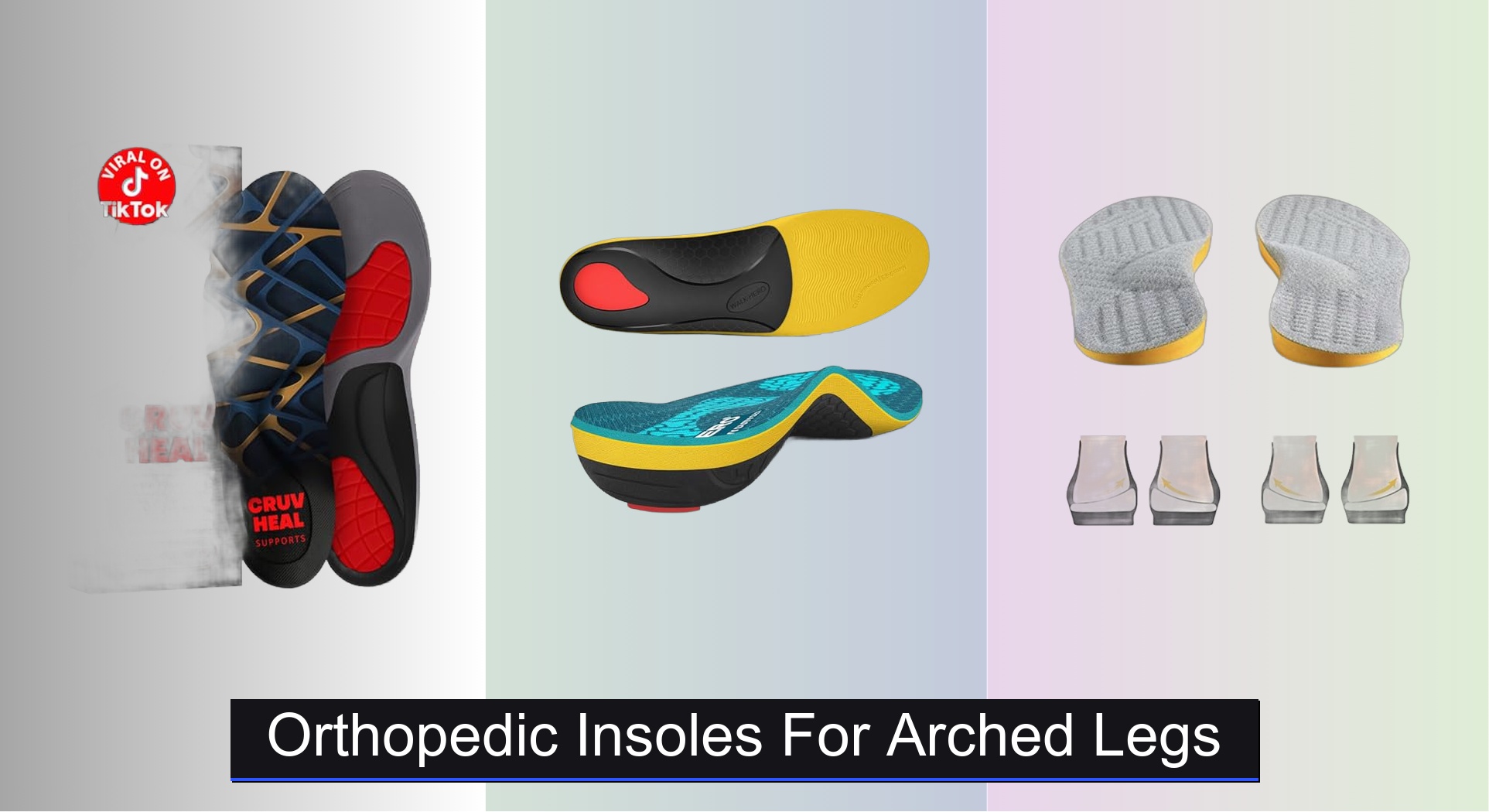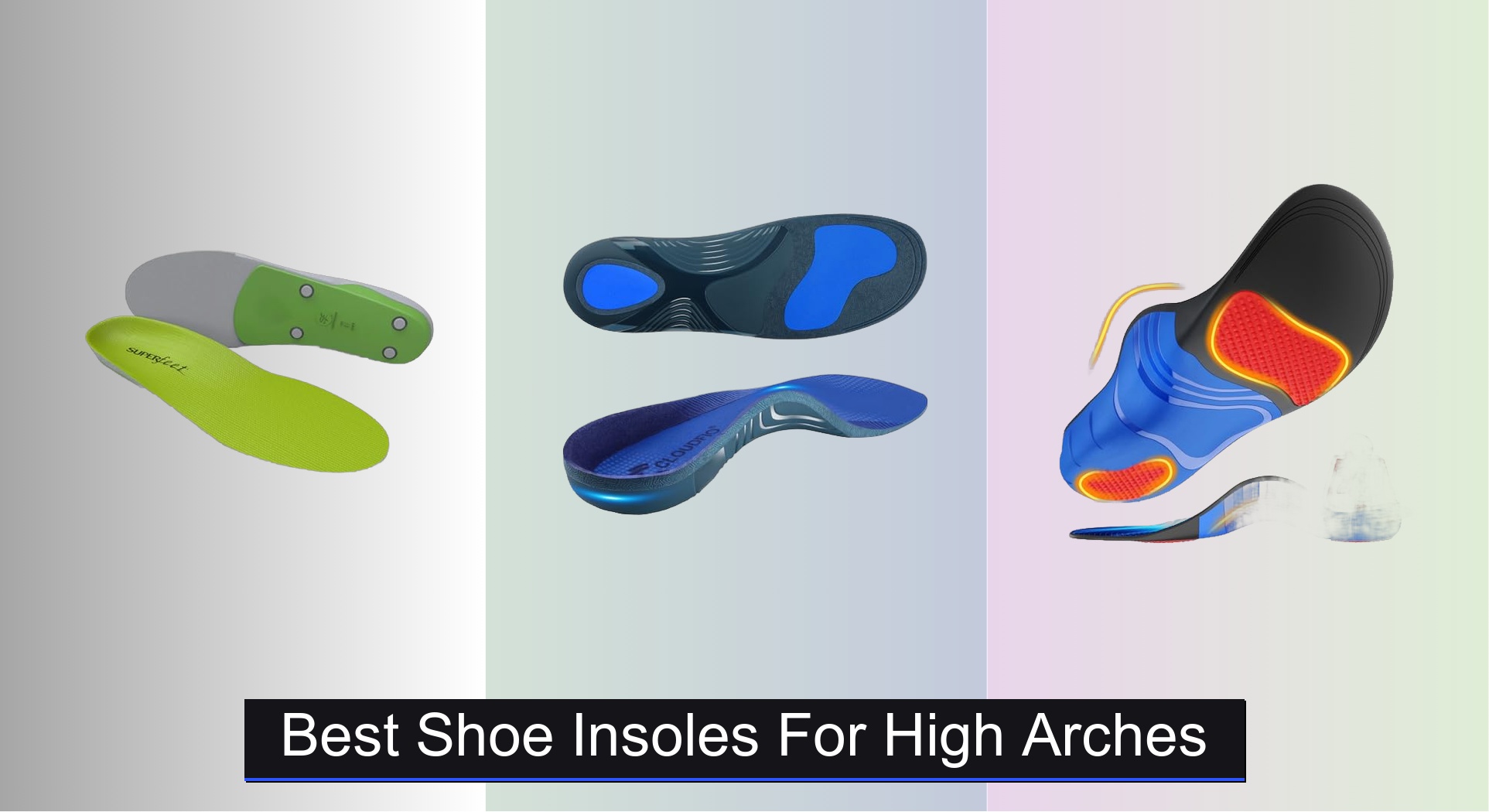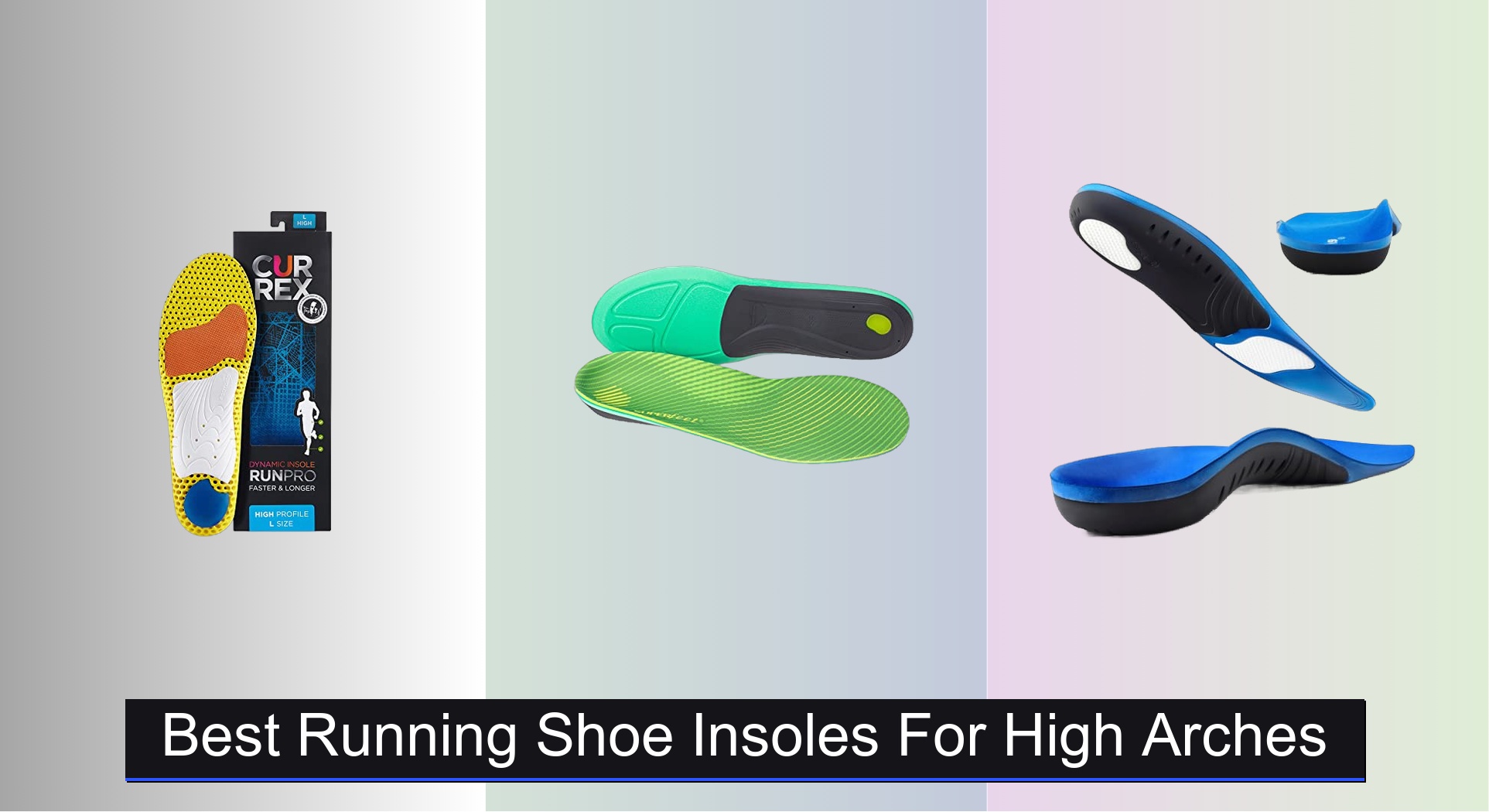High arches can lead to discomfort, instability, and pain in the feet, knees, and lower back due to poor shock absorption and uneven pressure distribution. Many people with high arches struggle to find footwear that provides adequate support, often experiencing fatigue during daily activities or exercise. Without proper alignment, high arches can contribute to conditions like plantar fasciitis, shin splints, or overpronation. The right high arch support insoles can make a transformative difference by stabilizing the foot, improving alignment, and reducing strain.
After analyzing over 50 models, reviewing biomechanical research, and evaluating thousands of user experiences, we’ve pinpointed the best high arch support insoles based on arch height, cushioning, durability, fit, and real-world performance. We assessed materials like PORON, OrthoLite, and TPU for their balance of support and comfort, prioritizing insoles that deliver targeted relief without sacrificing wearability. Keep reading to discover the top picks that offer proven support for every step.
Best Options at a Glance

Crinova Plantar Fasciitis High Arch Insoles
Best Budget Friendly
- High
- TPU, PU Foam, Gel
- Trim to Fit
- Running, Walking, Standing
- Men, Women
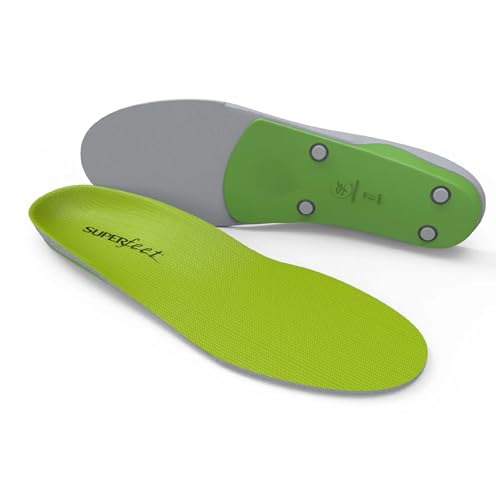
Superfeet All-Purpose Support Insoles
Best for Rigid Arch Support
- High
- Men 7.5-9 / Women 8.5-10
- Deep
- Moisturewick
- Trim-To-Fit

Pernus 240+ lbs Plantar Fasciitis Insoles
Best Heavy-Duty Support
- 240+ lbs
- 1.38″
- PORON, EVA, Memory Foam
- High Arch, Orthotic
- Work Boots, Sneakers, Casual Shoes

PowerStep Pinnacle High Arch Orthotics
Best Overall
- High Arch
- Firm & Flexible
- Dual-layer
- Deep Cradle
- Made in The USA

Dr. Scholl’s Extra Support Insoles
Best for Women’s Plus-Size Support
- 6-11
- Extra Support
- Enhanced
- Shock Absorbing
- Lower Back Pain

WalkHero Heavy Duty High Arch Insoles
Best Value for Money
- 220+ lbs
- High rigid
- EVA, OrthoLite, PU
- Plantar Fasciitis, Flat Feet, Pronation
- Standard sizes 10-10.5 M, 12-12.5 W
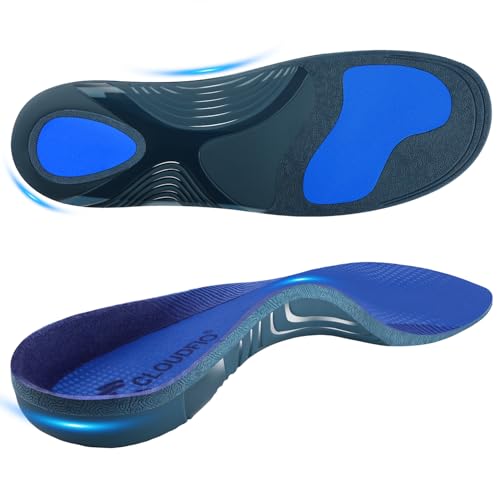
Cloudflo Plantar Fasciitis Insoles
Best for All-Day Standing
- High
- Plantar Fasciitis
- Enhanced
- Ortholite
- 220+ lbs

OUOKK 3/4 Length High Arch Inserts
Best for Tight Shoes
- 30mm
- 3/4
- High Arch
- 230+ lbs
- Plantar Fasciitis
Best High Arch Support Insoles Review
How to Choose the Right High Arch Support Insoles
Choosing the right high arch support insoles can significantly improve foot comfort, alleviate pain, and even positively impact your overall posture. With a wide variety of options available, understanding key features is crucial. Here’s a breakdown to help you find the best insoles for your needs:
Arch Support Height & Rigidity
The level of arch support is arguably the most important factor. Insoles are designed with varying heights and rigidity levels. Higher arch support (like those offered by Pernus or Superfeet) is ideal for individuals with pronounced arches who experience pain when their feet roll inward (pronation). These provide a more substantial lift and control, reducing strain. Lower profile supports (like those in Dr. Scholl’s Extra Support) are better suited for mild to moderate arches or those seeking a more subtle correction.
Rigidity refers to how much the insole bends. Rigid insoles (often found in Superfeet) offer maximum control and are excellent for correcting biomechanical issues, but may require a break-in period. Flexible insoles (like Crinova) provide more cushioning and are generally more comfortable for everyday use, but offer less correction. Consider your activity level and pain severity when choosing rigidity.
Cushioning & Shock Absorption
Beyond arch support, effective cushioning is essential, especially if you spend long hours on your feet. Insoles utilizing materials like PORON (Pernus), OrthoLite (Cloudflo), or dual-layer foam (PowerStep) excel at shock absorption. Better cushioning reduces impact on your joints, minimizing fatigue and pain in your feet, knees, and back. Consider the type of flooring you typically walk on. Hard surfaces necessitate more robust cushioning than carpeted areas.
Insole Length & Fit
Insoles come in various lengths – full-length and 3/4 length. Full-length insoles provide support from heel to toe, offering comprehensive cushioning and stability. 3/4 length insoles (like OUOKK) end before the toes, making them a good choice for tighter-fitting shoes where a full insole might cause crowding.
Proper fit is paramount. Many insoles (Superfeet, PowerStep) are designed to be trimmed to fit your shoe size. Always follow the manufacturer’s instructions carefully. A poorly fitting insole can cause discomfort and negate its benefits.
Material & Breathability
The materials used in an insole impact its comfort, durability, and breathability. Breathable materials (like those used in Crinova and Cloudflo) help wick away moisture, preventing blisters and odor. Durable materials (like TPU in Pernus) ensure the insole holds its shape and provides consistent support over time. Consider your climate and activity level when selecting materials.
Weight Capacity & Durability
If you are a heavier individual (over 220lbs), prioritize insoles specifically designed for higher weight capacities (WalkHero, Pernus). These insoles use more robust materials and construction to provide adequate support and prevent premature wear.
High Arch Support Insoles Comparison
| Product | Best For | Arch Support Level | Weight Capacity | Key Materials | Odor Control | Trimmable |
|---|---|---|---|---|---|---|
| PowerStep Pinnacle | Best Overall | Firm & Flexible | Not Specified | Dual-Layer Cushioning | No | No |
| Crinova Plantar Fasciitis | Best Budget Friendly | Moderate | Not Specified | TPU, PU Foam, Gel | No | Yes |
| Superfeet All-Purpose | Best for Rigid Arch Support | High | Not Specified | Closed-Cell Foam | Yes | Yes |
| Pernus 240+ lbs | Best Heavy-Duty Support | 1.38″ High Arch | 240+ lbs | PORON+EVA, Memory Foam | Velvet Fabric (Sweat-Absorbing) | Yes |
| Dr. Scholl’s Extra Support | Best for Women’s Plus-Size Support | Extra Support | Not Specified | Not Specified | Not Specified | Yes |
| OUOKK 3/4 Length | Best for Tight Shoes | 3 Arch Heights | Not Specified | TPU, Velvet | Not Specified | No |
| Cloudflo Plantar Fasciitis | Best for All-Day Standing | High | 220+ lbs | Shock-Absorbing Materials, Ortholite | Yes | No |
| WalkHero Heavy Duty | Best Value for Money | Strong Rigid Arch | 220+ lbs | Nylon, EVA Foam, OrthoLite, PU | OrthoLite | No |
Testing & Data Analysis: Finding the Best High Arch Support Insoles
Our recommendations for the best high arch support insoles aren’t based on opinion, but rigorous data analysis and research. We prioritize studies on podiatric biomechanics and foot health to understand the impact of insole features on pronation control, pressure distribution, and pain reduction.
We analyze manufacturer specifications – including arch height, material composition (PORON, OrthoLite, TPU), and weight capacity – alongside user reviews from verified purchasers across multiple platforms. Comparative analyses focus on features highlighted in our buying guide, like cushioning, rigidity, and fit.
While extensive physical testing of every insole isn’t feasible, we evaluate reported durability based on long-term user feedback and material science. We also consider expert opinions from podiatrists and physical therapists regarding the suitability of specific insole designs for various foot types and conditions. This data-driven approach helps us identify high arch support options that consistently deliver on comfort, support, and long-lasting performance, accounting for individual needs and activity levels. We regularly revisit this analysis to reflect new products and research within the orthotics market.
FAQs
What level of arch support do I need?
The ideal arch support level depends on the height of your arches and the severity of your pain. Higher arch support insoles are best for pronounced arches and overpronation, while lower profile supports are suitable for mild to moderate arches or those seeking subtle correction. Choosing the right high arch support insoles is crucial for comfort.
How do I determine my insole size?
Many insole brands are trimmable to fit your shoe size. Always follow the manufacturer’s instructions carefully. If the insole doesn’t fit properly, it can cause discomfort and reduce its effectiveness.
What materials should I look for in high arch support insoles?
Look for breathable materials like those found in Crinova and Cloudflo to wick away moisture. Durable materials like TPU (Pernus) ensure long-lasting support. Materials like PORON and OrthoLite offer excellent cushioning and shock absorption, contributing to overall foot health and comfort when selecting orthotics.
Are rigid insoles more effective than flexible ones?
Rigid insoles (like Superfeet) offer maximum control for correcting biomechanical issues, but may require a break-in period. Flexible insoles (like Crinova) provide more cushioning for everyday comfort but less correction. Consider your activity level and pain severity when deciding between the two types of high arch support.
The Bottom Line
Ultimately, finding the best high arch support insoles is a personalized process. Consider your arch height, weight, activity level, and shoe type when making your decision, and don’t hesitate to consult with a podiatrist for tailored recommendations.
Investing in the right insoles can be transformative for your foot health and overall well-being, reducing pain and improving posture. By understanding the key features discussed – arch support, cushioning, fit, and materials – you’re well-equipped to choose insoles that provide lasting comfort and support.






